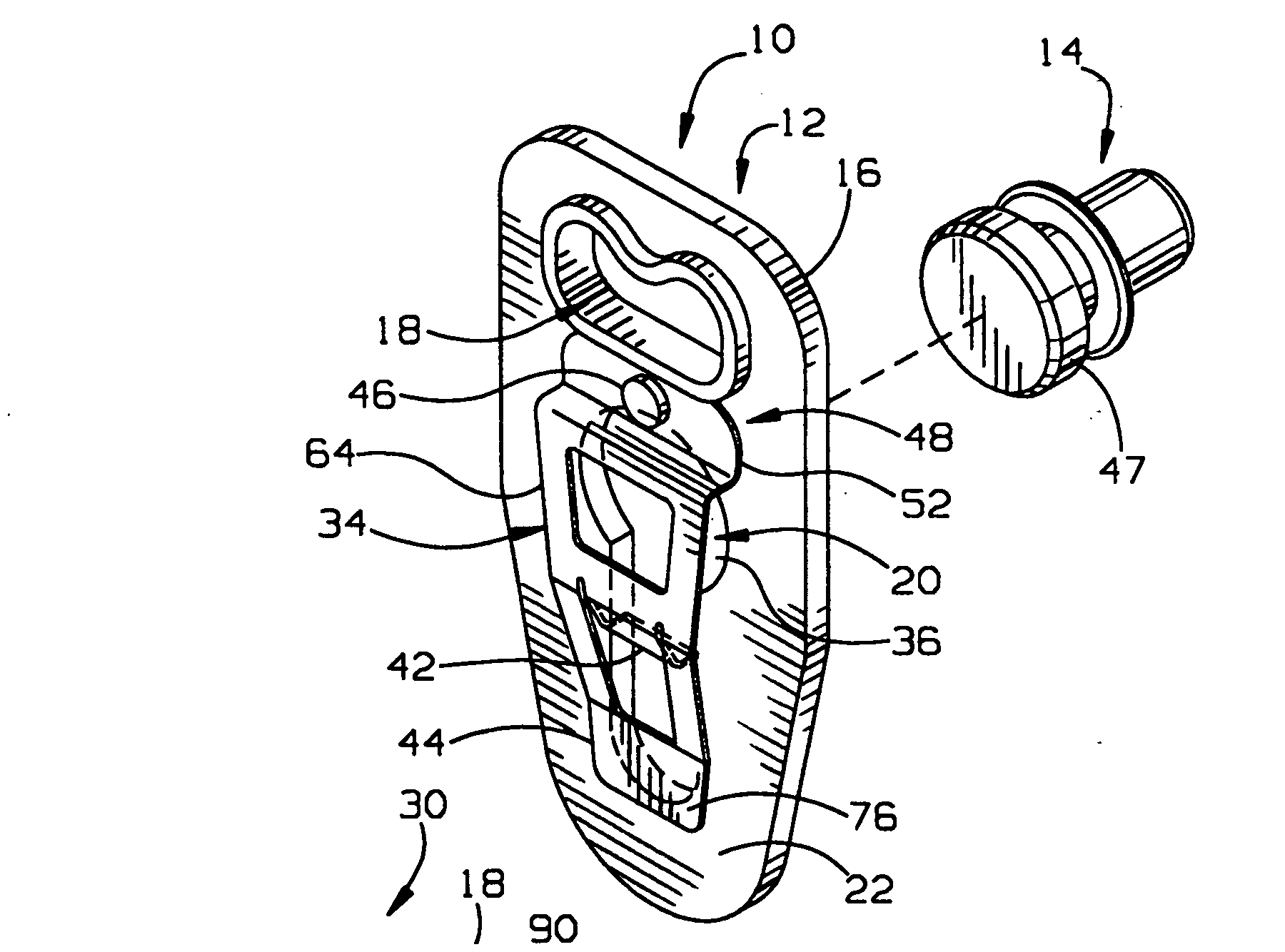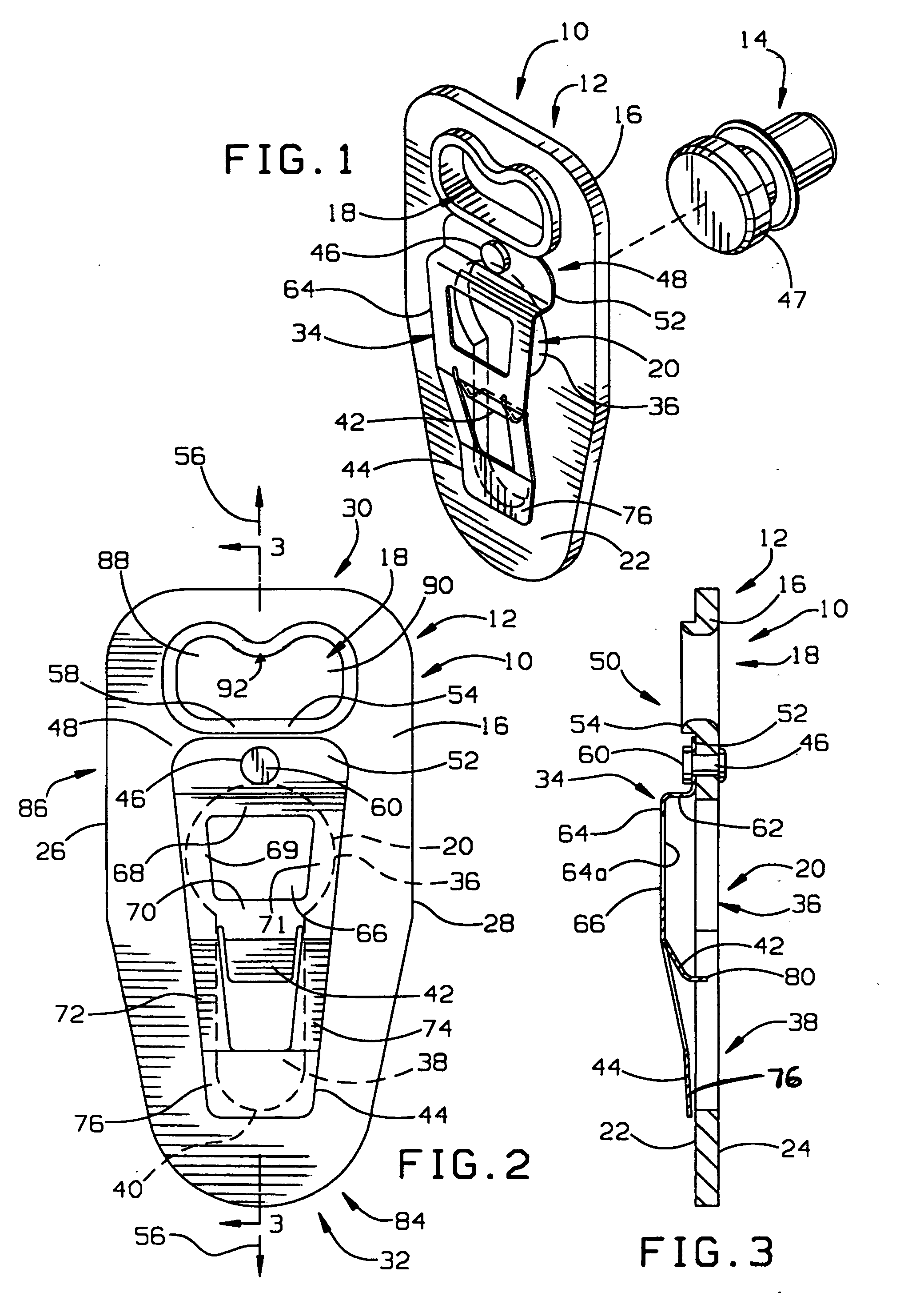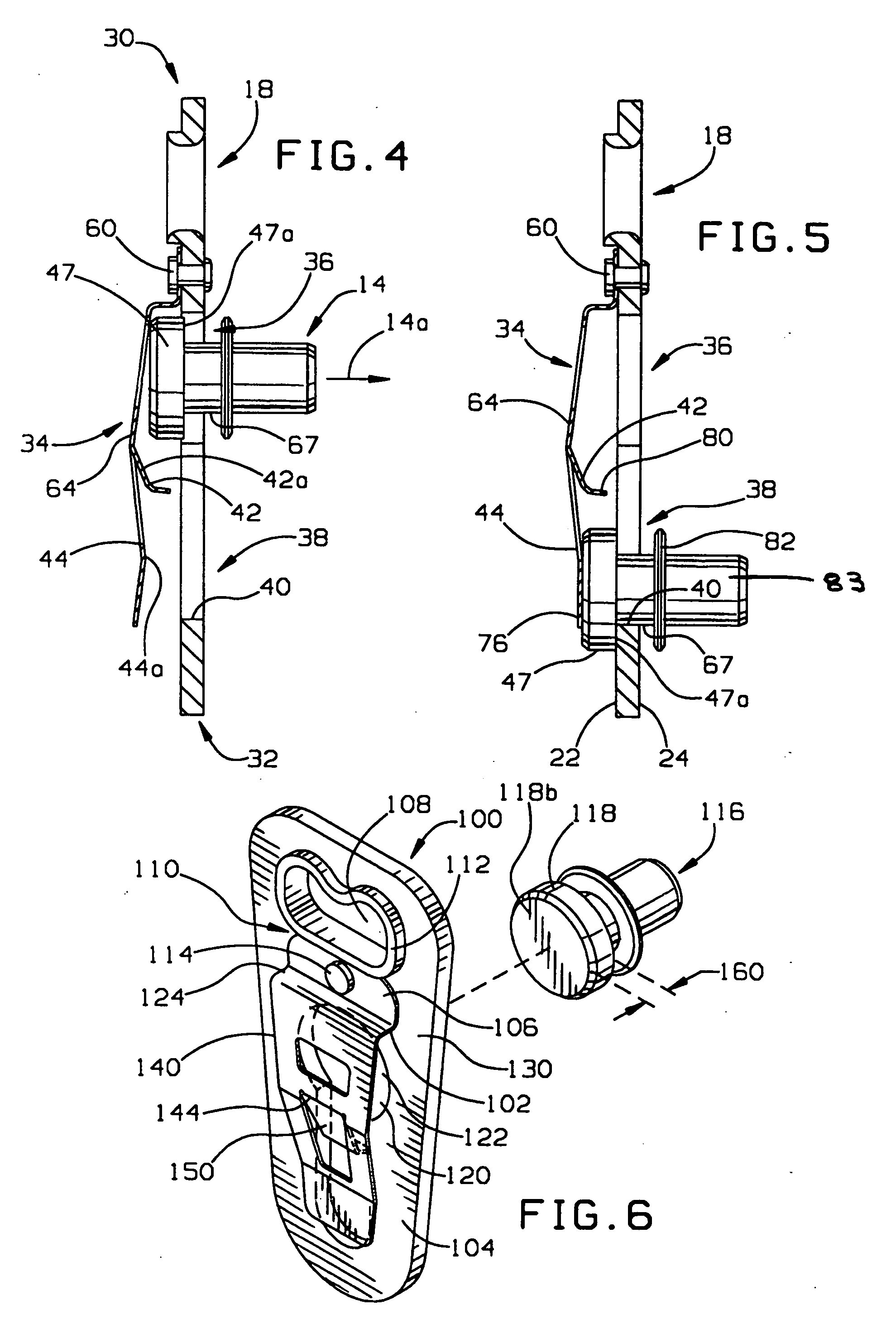Seat belt anchor device and method
- Summary
- Abstract
- Description
- Claims
- Application Information
AI Technical Summary
Benefits of technology
Problems solved by technology
Method used
Image
Examples
Embodiment Construction
[0032] In FIGS. 1-5, a seat belt anchor device 10 is shown. The seat belt anchor device 10 includes a plate member 12 utilized to anchor a seat belt (not shown) to a stud 14 that can be in turn fixed to a lower portion of a seat frame, for example. The plate member 12 has a plate body 16 that can include an upper opening 18 for receiving seat belt webbing extending therethrough, and a opening 20 therebelow for receipt of the stud 14, as described hereinafter.
[0033] The plate body 16 has a relatively thin thickness between opposite surfaces 22 and 24, e.g. approximately 3.2 millimeters (see FIG. 3). The plate body 16 also has an elongate construction with sides 26 and 28 that are spaced from each other transversely across the plate body surfaces 22 and 24 by a much smaller amount than they extend along the length of the plate body 16 from proximate end 30 to distal end 32 thereof (FIG. 2). In this regard, the plate member 12 is provided with a long, narrow and thin construction whic...
PUM
 Login to View More
Login to View More Abstract
Description
Claims
Application Information
 Login to View More
Login to View More - R&D
- Intellectual Property
- Life Sciences
- Materials
- Tech Scout
- Unparalleled Data Quality
- Higher Quality Content
- 60% Fewer Hallucinations
Browse by: Latest US Patents, China's latest patents, Technical Efficacy Thesaurus, Application Domain, Technology Topic, Popular Technical Reports.
© 2025 PatSnap. All rights reserved.Legal|Privacy policy|Modern Slavery Act Transparency Statement|Sitemap|About US| Contact US: help@patsnap.com



